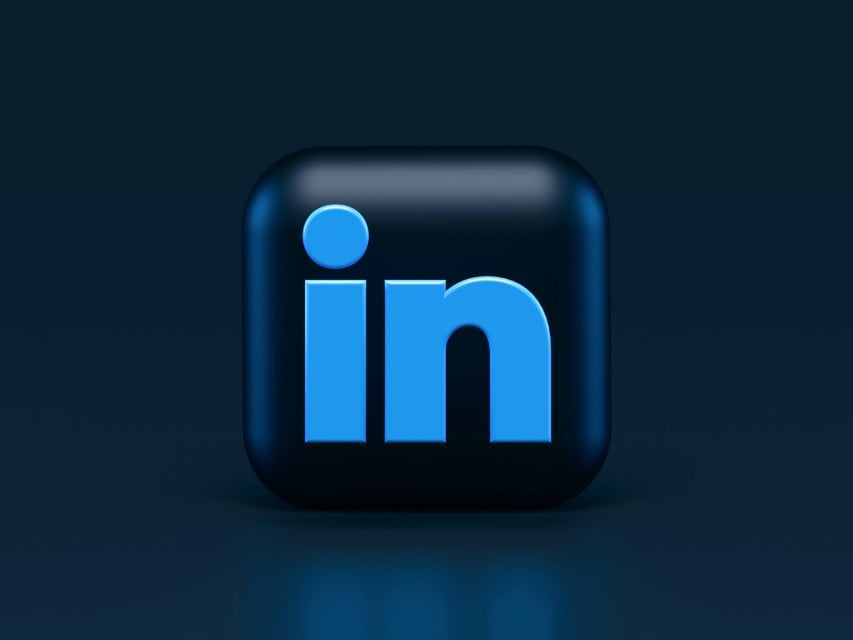Your LinkedIn page is how you present yourself professionally online, and it’s an important tool for making connections and looking for work. But because there are so many people on the site, it can be hard to stand out and leave an impression that lasts.
When you’re looking for a new job, it’s important to make your LinkedIn profile stand out so that possible employers and connections can find you. You can show how valuable you are and set yourself apart from other candidates by talking about your skills, experience, and successes. If you know what to do, you can use LinkedIn to move up in your job and connect with people who are influential in your field.
We will show you how to make the most of LinkedIn and help you make the most of this powerful tool in this complete guide.
How do I make my LinkedIn page work better?
A complete and well-written LinkedIn profile that shows off your skills, experience, and accomplishments in a way that makes you stand out to possible employers or professional contacts is called an optimized profile. It shows what makes you valuable, builds your business brand, and sets you apart from other applicants.
It has a professional headshot, an interesting summary, a lot of information about your schooling and work experience, and any other information that shows off your skills and qualifications. It’s also busy and regularly updated with new education, skills, accomplishments, and work experience. It has a lot of connections.
A well-thought-out LinkedIn profile can help you get more exposure and make it more likely that hiring managers and recruiters will find you when they are looking for possible candidates.
Table of Contents
1. Start with a picture of yourself as a professional
No, you don’t need to be perfect to do well in your chosen field. But people can’t help but judge others based on how they look. And the decision is more than just a matter of taste. Your profile picture can tell a lot about who you are, so a recruiter will probably try to guess what kind of person you are based on it.
First, let’s talk about how to make a business LinkedIn profile picture work:
400×400 pixels is the best size for a LinkedIn picture. You can also share bigger ones, but they can’t be bigger than 8 MB.
About 60% of the picture should be taken up by your face.
The picture needs to be clear and well-lit. Make certain it’s up-to-date and easy to recognize.
Now comes the hard part: your professional picture needs to show who you are. And this depends on the job you want. The profile picture of a fashion model will be different from the picture of the CEO of a company. If you’re not naturally breaking the rules, choose a picture that shows what people expect from someone working in your field. A natural expression on your face will help you look serious, and a confident smile will help you seem friendly. If none of your photos work, you might want to get a professional picture. It costs a lot, but it’s worth it if it helps you get more job offers.
2. Put a picture in the background to get people’s attention
Your LinkedIn page’s main picture is free advertising space that you can use to show off your business. Sure, you can just add a picture of your best mountain view if you’d rather. But I think you should share it on other social media sites and make the background picture on LinkedIn better so recruiters stay on your page longer.
Here’s how to give your page a background that stands out:
Find a picture that shows what you do for a living. It could be of you working, your office, the services you provide, the city you live in, or something related to your field. If you’re not good at taking pictures, you can use an image from Pexels or Pixabay that doesn’t state who made it.

Instead of sharing a picture, use it to make a banner with text that shows off your brand. You can talk about your best professional accomplishment, add an inspiring quote, list the services you offer, or put up your contact information. It’s like a bigger business card. Use online tools like Canva to make your picture.
Follow the rules: the best picture for your LinkedIn page should be in a JPG or PNG file. It should be 1584×396 pixels, and it shouldn’t be bigger than 8 MB.
As soon as you share a new picture, make sure it looks good on both a computer and a phone. Try a different picture if it’s blurry or has dots that you can see.
3. Figure out the keywords you want to rank for. When it comes to keywords, you need to know what you want to rank for
For instance, if you’re a salesperson or freelancer looking for new clients, make sure your profile has buzzwords that your prospects might be searching for. You could also use hashtags in your profile.
This person knows how to make themselves stand out in the LinkedIn search, as shown by their high phrase visibility:
What comes to mind when you’re going through the same problems as other people? Those are the keywords that other people might be looking for. You can also find keywords by: – Asking your present clients
Make sure you use them as much as possible without stuffing the text with keywords. It might still work now, but LinkedIn will probably change how the search works, which will put you at a disadvantage. Like when Google first started.
4. Make your LinkedIn profile headline better
The best introduction for LinkedIn tells people what you do and what you can do for them. You can be very clear about who you are and what you offer in 220 characters.
Don’t say things like, “I help CEOs of companies with more than 25 employees to…”
Why? Because everyone wants to be very detailed and useful to a certain group of customers these days.
This isn’t a bad idea, but some people are going to make it very awkward by trying to pitch in every line. Most people, including me, just don’t like these types of people. Do not act this way.
It makes a bigger difference if your headline tells people right away what you do and where you work. I found Oli’s post on my LinkedIn feed, and because the headline was so simple and clear, I knew right away what he does for a living and what role he holds in his company.
Related Post: How To Create An Online Course For Free
5. Write a helpful summary of your profile
The following is a helpful description:
A strong summary of who you are
What you can do to help possible clients
Whether you’re willing to try new things or not
If you’re a seller, give them your email address or phone number.
A clear order to act
Take a look at Eric’s summary as an example. The summary is interesting and useful at the same time:
How does this summary of your profile work?
It’s short and easy to read.
People can find out what Eric posts on LinkedIn and how he can help them.

He talks about his accomplishments and walks the prospect through the steps he took to reach those goals. This is a great way to tell your LinkedIn story.
He sums up with some details from his own life.
6. Go to war with buzzwords
Buzzwords are words and phrases that are used so often in LinkedIn headlines and descriptions that they don’t mean much anymore. Words like “specialized,” “leadership,” “focused,” “strategic,” “experienced,” “passionate,” “expert,” “creative,” “innovative,” and “certified” are often at the top of our lists of the most overused buzzwords. This doesn’t mean you can’t call yourself these things or that they don’t matter. But saying these things won’t make people believe that you have these traits. You also need to show them, both in how you describe yourself and how you use the tools on your LinkedIn page to show what you’re about.
7. Get to know more people
Adding your email address book to your LinkedIn page is one of the easiest and most useful ways to get more people to follow you. This lets LinkedIn suggest people you might want to connect with. It’s amazing how well this can help you find the right people to connect with. Plus, no connection requests are sent without your permission, so you can check out all the possible connections. Also, make it a habit to send LinkedIn connection requests after meetings and talks. This is a great way to keep your network active and up to date.
8. List the useful skills
This is one of the fastest things you can do on LinkedIn: look through the list of skills and pick out the ones that apply to you. This helps to back up what you say in your headline and summary, and it gives other people a chance to support you. But the important thing is to stay current. Some skills that aren’t important to who you are or what you do can make a long list feel crowded. Every once in a while, clean up your list of skills.
9. Get people to vouch for you
Other members’ endorsements back up your skills and make you seem more trustworthy. How do I get LinkedIn to recommend me? To start, look through your network and pick out friends who you think deserve your support. That’s often what gets them to return the favor. Don’t be afraid to send a nice message and ask for support for a few key skills as well. But remember that significance is important. Get in touch with people whose support you’d value.
10. Getting involved with LinkedIn Learning
You can improve your skills and make your profile more appealing by taking classes on LinkedIn Learning. When you finish these classes, you’ll get certificates that show you’re committed to learning new things and make it easier for people who need your skills to find.

11. Using the LinkedIn Creator mode
If you write content, you might want to use LinkedIn’s Creator Mode. It can help your content get seen and get more people to interact with it, especially if it’s useful and important to your network.
In conclusion
You can find new chances, make connections, and build your digital personal brand by making sure your LinkedIn profile is optimized. Using these tips will help you improve your LinkedIn profile and turn it into a useful business tool. Don’t forget that LinkedIn isn’t just a place to look for jobs; it’s also a place for pros to network and keep growing.
